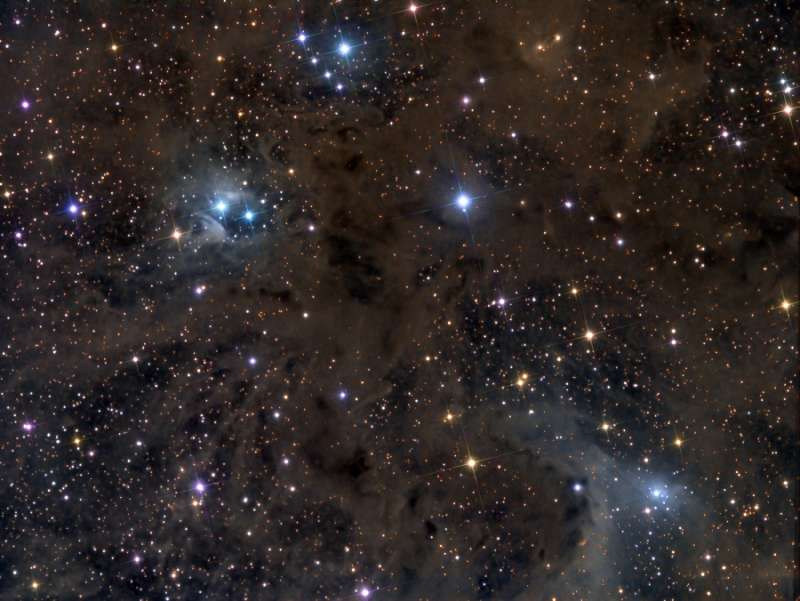
|
Credit & Copyright: Alessandro Falesiedi
Explanation:
This composition in stardust
covers almost 2 degrees
on the sky, close to the border of the zodiacal
constellation
Aries and the plane of our Milky Way Galaxy.
At the lower right of the gorgeous skyscape is a dusty blue
reflection nebula surrounding a bright star
cataloged as
van den Bergh 13 (vdB 13), about 1,000 light-years away.
At that estimated distance, the
cosmic canvas is over 30 light-years across.
Also surrounded by scattered blue starlight, vdB 16 lies
toward the upper left, while
dark dusty nebulae sprawl across the
scene.
Near the edge of a large
molecular
cloud, they can hide the newly
formed stars and young stellar objects
or protostars from prying optical telescopes.
Collapsing due to
self-gravity, the
protostars
form around dense cores embedded in the molecular cloud.
|
January February March April May June July August September October November December |
| ||||||||||||||||||||||||||||||||||||||||||||||||
NASA Web Site Statements, Warnings, and Disclaimers
NASA Official: Jay Norris. Specific rights apply.
A service of: LHEA at NASA / GSFC
& Michigan Tech. U.
Based on Astronomy Picture
Of the Day
Publications with keywords: reflection nebula - dust
Publications with words: reflection nebula - dust
See also:
